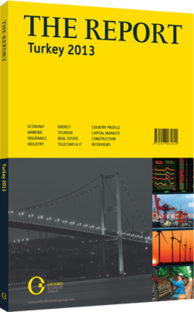Keeping up with tradition: Sales of textiles and clothing remain steady
Known all over the world for its carpets and clothes, Turkey has long held a major place in the world textile and ready-to-wear markets. In recent times, however, that status has been challenged by lower-cost Asian producers, obliging the sector to go further upscale, and capitalise on its great structural flexibility in order to beat competitors.
In 2012 the ready-to-wear and clothing sector was the third-largest exporter in Turkey, responsible for over $16bn of goods sent overseas, and served as a major source of employment and vital support for a range of associated industries, such as chemicals and retail. Textiles, meanwhile, came in seventh, exporting some $7.85bn worth of goods.
Sector Changes
Textiles started out as the larger part of the sector in Turkey, with raw materials such as cotton and wool having been the basis of much of the rural cash economy since Ottoman times. By the 1990s textiles accounted for around 9% of the country’s total exports, according to the Istanbul Textile and Apparel Exporter Association, a figure that grew further following the Customs union agreement with the EU in 1996.
By 2008 Turkey had around 7500 textile companies in business, which were mostly small and medium-sized enterprises and producing in the Istanbul, Izmir, Bursa, Gaziantep and Kahramanmaraş areas. Around 25% of all textile exports have been cotton products, with the rest largely made up of synthetics, and knitted and woven pile fabrics, such as velvet. The main export markets are the EU and the countries of the former Soviet Union, to a lesser degree.
At The Ready
Yet while textiles have continued to be an important sector, ready-to-wear has increased its share in recent times, as the sector has shifted away from basic products to more value-added, as well as locally designed and made items.
By 2005 Turkey had become the EU’s second-largest and the world’s fourth-largest supplier of clothing, according to the Turkish Export Promotion Centre. This pattern looks likely to continue, as the industry gears towards 2023. Indeed, the president of the Uludağ Clothing and Ready-to-Wear Exporters Union, Şenol Şankaya, recently told the local media that the sector was looking to contribute $60bn in exports to the national $500bn target by the republic’s centenary.
According to the Turkish Clothing Industrialists Association, some 80% of all ready-to-wear exports currently go to the EU, with the UK and German markets particularly vital as of late. Competition has also been increasing, as Bangladesh has come on as a global exporter. An item produced for $100 in Turkey can be bought for just $51 from Bangladesh, which gained the number two position worldwide in terms of clothing exports in September 2012, surpassing Turkey.
Challenges
Higher manufacturing costs have been a bugbear for Turkish ready-to-wear companies recently as well, impacting competitiveness, particularly as taxes on imported fabrics have been hiked, partly in response to demands from domestic textile producers. “Imported fabrics are now subject to very high taxes, so our costs are getting higher and we are losing competitiveness,” said Ali Ulvi Orhan, the president of the Osmanbey Textile Businessmen’s Association.
Osmanbey, a quarter in the Şişli district in Istanbul, is something of a centre for the high-end ready-to-wear sector, with high investment and attention to design among local producers, which sell to over 90 different countries. This success is also partly due to the ability of local firms to take on smaller orders than their Asian rivals, while also delivering faster and at lower labour costs than in Europe. Turkish companies are also much more willing to extend credit to purchasers, following a long tradition of negotiation and barter.
At present, such companies are considering the next step – adding a retail end to their businesses, as they continue to explore penetrating emerging markets, especially in Asia and Africa. “We need to give more importance to own-brand or franchise shops,” Orhan told OBG. “This is because, if you have a name, you can sell your goods for a much higher price,” he added.
You have reached the limit of premium articles you can view for free.
Choose from the options below to purchase print or digital editions of our Reports. You can also purchase a website subscription giving you unlimited access to all of our Reports online for 12 months.
If you have already purchased this Report or have a website subscription, please login to continue.

